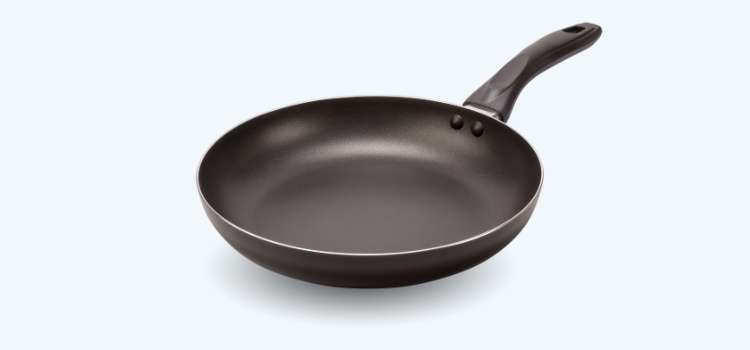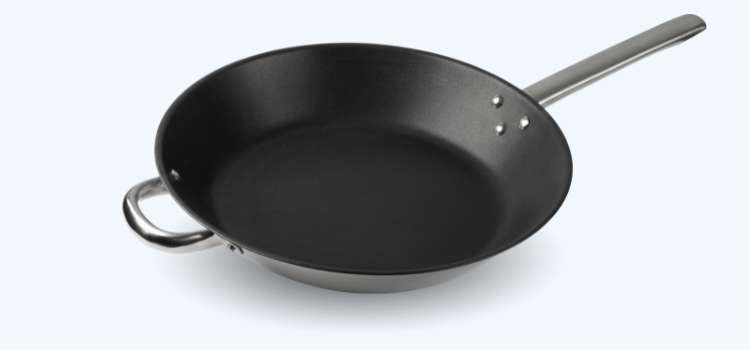As an Amazon Associate, I earn from qualifying purchases

When it comes to equipping your kitchen, selecting the right frying pan is essential for culinary success. A frying pan is one of the most versatile tools in your cooking arsenal, used for frying, sautéing, searing, and even baking. However, the size of your frying pan can significantly impact your cooking efficiency and the quality of your dishes.
Whether you’re preparing a quick breakfast for one or a hearty dinner for the family, the right frying pan size ensures even cooking and optimal results. Let’s explore the world of frying pans and how choosing the correct size can elevate your cooking experience.
Common Frying Pan Sizes and Their Uses
Frying pans come in a variety of sizes, each catering to specific cooking needs. Understanding the common sizes and their ideal uses can help you make an informed decision when stocking your kitchen.
- 8-Inch Frying Pan
The 8-inch frying pan is perfect for small meals and individual servings. Its compact size makes it ideal for cooking eggs, omelets, or a single grilled cheese sandwich. For those who enjoy more control over their cooking, the 8-inch pan allows precise heat management, making it easier to handle delicate tasks such as flipping an egg or creating the perfect pancake. Its small size also makes it a breeze to clean and store, a great option for those with limited kitchen space.
- 10-Inch Frying Pan
A 10-inch frying pan is a versatile staple for most home kitchens. It strikes a balance between space and manageability, making it suitable for everyday cooking tasks. Whether you’re sautéing vegetables, browning meat, or preparing a meal for two to three people, the 10-inch pan offers ample room without being cumbersome. Its moderate size ensures even heat distribution, and it fits comfortably on most stovetops, making it a reliable choice for a wide range of recipes.
- 12-Inch Frying Pan
The 12-inch frying pan is designed for larger meals and family-sized portions. With its expansive surface area, it’s perfect for frying meats, stir-frying vegetables, or cooking multiple servings at once.
If you enjoy batch cooking or entertaining guests, the 12-inch pan provides the space you need to prepare generous portions efficiently. Its larger size may require more storage space, but the convenience of cooking in bulk makes it a worthwhile addition to any kitchen.
Factors to Consider When Selecting a Size
Choosing the right frying pan size goes beyond just the number of people you’re cooking for. Several factors can influence your decision, ensuring you select a pan that meets your specific needs.
- Cooking Frequency and Portions: Consider how often you cook and the typical portion sizes you prepare. If you frequently cook for one or two people, a smaller pan may suffice. However, if you regularly prepare meals for a family or enjoy hosting dinner parties, investing in a larger pan can save you time and effort.
- Stove Size and Compatibility: Ensure that the frying pan size you choose fits your stove burners. A pan that’s too large for your burner may result in uneven cooking, while a pan that’s too small may not utilize the heat efficiently. Matching your pan size to your burner ensures consistent heat distribution and optimal cooking results.
- Storage and Handling: Consider the available storage space in your kitchen and the weight you’re comfortable handling. Larger pans may require more storage space and can be heavier to maneuver, especially when filled with food. Choose a size that’s practical for your kitchen setup and easy for you to handle.
Tips for Maintaining Frying Pans

Proper maintenance of your frying pans not only extends their lifespan but also ensures they perform at their best. Here are some tips to keep your pans in top condition:
- Cleaning and Care: Always follow the manufacturer’s guidelines for cleaning your frying pan. For non-stick pans, use a soft sponge and mild detergent to preserve the coating. Avoid abrasive cleaners or metal utensils that can scratch and damage the surface. For stainless steel or cast iron pans, additional care such as seasoning may be required to maintain their quality.
- Proper Use: Use the right utensils to prevent scratching and damaging your frying pan. Wooden or silicone utensils are ideal for non-stick surfaces, while stainless steel pans can handle metal utensils. Avoid using high heat settings unless necessary, as this can warp the pan over time.
- Storage Tips: Store your pans properly to prevent warping and preserve their shape. If stacking is necessary, place a soft cloth or paper towel between pans to prevent scratches. Consider hanging pans with sturdy handles to save space and protect their surfaces.
Conclusion
Selecting the right frying pan size is crucial for enhancing your cooking efficiency and achieving delicious results. By considering your cooking habits, stove compatibility, and storage space, you can choose a frying pan that meets your needs and complements your kitchen setup. Whether you opt for an 8-inch, 10-inch, or 12-inch pan, each size offers unique benefits that cater to different cooking scenarios.
The right frying pan not only simplifies meal preparation but also contributes to a more enjoyable cooking experience. By investing in a high-quality frying pan and maintaining it properly, you can ensure its longevity and performance, making it a valuable tool in your culinary journey. With the perfect frying pan size, you’ll be well-equipped to tackle any recipe with confidence and ease. Embrace the art of cooking with the right tools, and let your frying pan be the hero of your kitchen adventures.
FAQ
What is the ideal size frying pan?
The ideal frying pan size varies based on your cooking needs. For everyday use, a 10-inch (25cm) pan is versatile and suitable for most tasks, like sautéing vegetables or frying meats. It balances space and manageability, making it a staple in many kitchens.
Should I get a 24cm or 28cm frying pan?
Choose a 24cm frying pan for smaller meals and individual servings. Opt for a 28cm pan if you frequently cook for multiple people or need more space for larger dishes. Your choice depends on your typical portion sizes and culinary needs.
What size frying pan for 4 people?
For cooking meals for four people, a 12-inch (30cm) frying pan is ideal. It offers ample space for larger portions, ensuring even cooking and efficiency. This size is perfect for family meals or when entertaining guests.
How do I measure my frying pan size?
To measure a frying pan, use a ruler or measuring tape to determine the diameter across the top, from one lip to the other, excluding the handle. This measurement gives you the pan’s size, typically expressed in inches or centimeters.
As an Amazon Associate, I earn from qualifying purchases